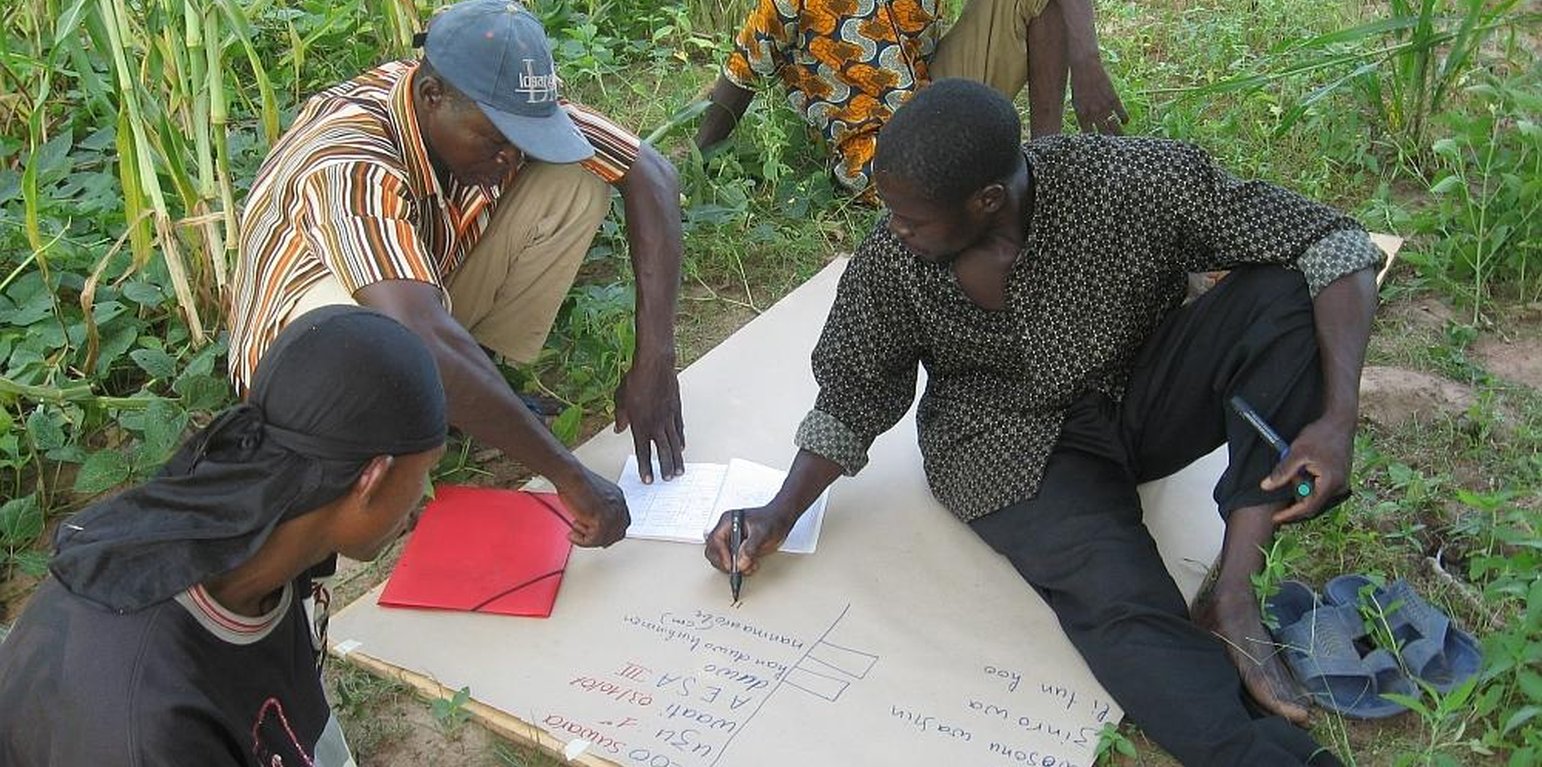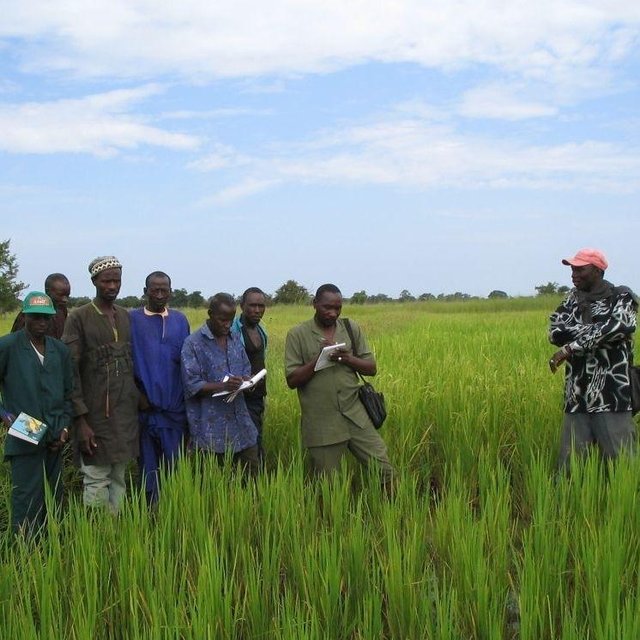



This is an educational approach for farmers, based around training groups of 20 to 25 adults and drawing on the experience of the farmers participating in the group. Farmers undertake their own analyses of the problems at hand and find their own solutions.
The PLAR-IRM approach comprises the following stages: Farmers start out by exchanging their knowledge, opinions, experiences and practices with each other and then observe crop behaviours. They compare, interpret, analyse and understand the causes for the differences observed. Next they weigh up the actions to be taken, testing new ideas and then putting them into practice. Farmers organise themselves (individually and as a group or community) to undertake the activities. Following this, functional networks are created with other farmers, extension/research services and any other support service. During the process, farmers’ learning and understanding is facilitated so that they can make better and more informed decisions, with the end goal of more productive and sustainable integrated rice management. The animators/facilitators use the learning tools provided in the PLAR-IRM training modules. These tools have been developed primarily to encourage farmers to exchange their experiences and to observe, reflect, analyse, conceptualise and test as a group. Many of the tools are based on the visualisation of phenomena and bring aspects to light that beneficiaries were previously unaware of. The 11 PLAR-IRM learning tools are: agricultural calendar, lowland area map, transect, plenary exchange session, the PLAR-IRM team’s introduction of new ideas, field observation in sub-groups, observation synthesis/Feedback, the IRM plot, trials, monitoring sheet, evaluation of gains.
Stages of implementation: 1)train the PLAR-IRM field teams, 2)devise projects for rolling out the PLAR-IRM approach more widely, 3)the approach calls for the intervention of specialist technical agents or technicians trained in PLAR-IRM, known as animators/facilitators, who help farmers to find their own solutions to problems and to increase their capacity for managing rice growing endeavours, 4)training sessions with farmers are very practical and are held in farmers’ fields. The facilitator prompts farmers to share their experiences and keeps lectures to a minimum. This stimulates farmers’ capacities to observe and interpret actions and to decide on the steps to take. Training sessions take place once a week. They begin around one month before the rice season starts and continue throughout the entire rice growing season, until after the harvest. Each session lasts one to two hours. Once the problem areas have been identified, farmers can try out new ideas. The facilitators help the farmers conduct simple trials to compare one or several new practices to their current techniques. Farmers agree among themselves on their objectives and the protocols to draw up. Practical sessions based around visits to field test sites give them the opportunity to carry out observations and adapt the new practices to their existing rice growing management context. The method is described in a manual (consisting of around 30 modules).
The lowland management committee organises teams and session calendars, and identifies plots. PLAR-IRM trainers plan modules and sessions, mobilise researchers, devise training content, conduct practical observation exercises, take notes and produce syntheses, and deploy evaluation tools for participatory learning. Farmers take part in the learning modules, apply the module learning in the field, carry out observations, contribute to decision-making, act on decisions made, perform monitoring and evaluation, and share their experience and expertise with others. The project team offers support, strategic organisation and coordination, liaises with local people, introduces the trainers, and contributes to the evaluation and capitalisation processes.
Location: Sikasso, Kayes, Ségou, Mopti, Mali, Mali
Initiation date: 2003
Year of termination: n.a.
Type of Approach
| What stakeholders / implementing bodies were involved in the Approach? | Specify stakeholders | Describe roles of stakeholders |
| local land users/ local communities | ||
| SLM specialists/ agricultural advisers | ||
| NGO | HELVETAS Swiss Intercooperation | |
| national government (planners, decision-makers) |
Decisions were taken by
Decisions were made based on
Training sessions with farmers are very practical and are held in farmers’ fields. The facilitator prompts farmers to share their experiences and keeps lectures to a minimum. This stimulates farmers’ capacities to observe and interpret actions and to decide on the steps to take. Training sessions take place once a week. They begin around one month before the rice season starts and continue throughout the entire rice growing season, until after the harvest. Each session lasts one to two hours. Once the problem areas have been identified (constraints), farmers can decide to try out new ideas.
Research was carried out both on station and on-farm
Farmers start out by exchanging their knowledge, opinions, experiences and practices with each other and then observe crop behaviours. They compare, interpret, analyse and understand the causes for the differences observed. Next they weigh up the actions to be taken, testing new ideas and then putting them into practice.
PLAR-IRM has been rolled out in Mali, Benin, Togo, Guinea, Côte D’Ivoire, Ghana and the Gambia. In Mali, the practice has been applied in the regions of Sikasso, Kayes, Ségou and Mopti.
Farmers undertake their own analyses of the problems at hand and find their own solutions.